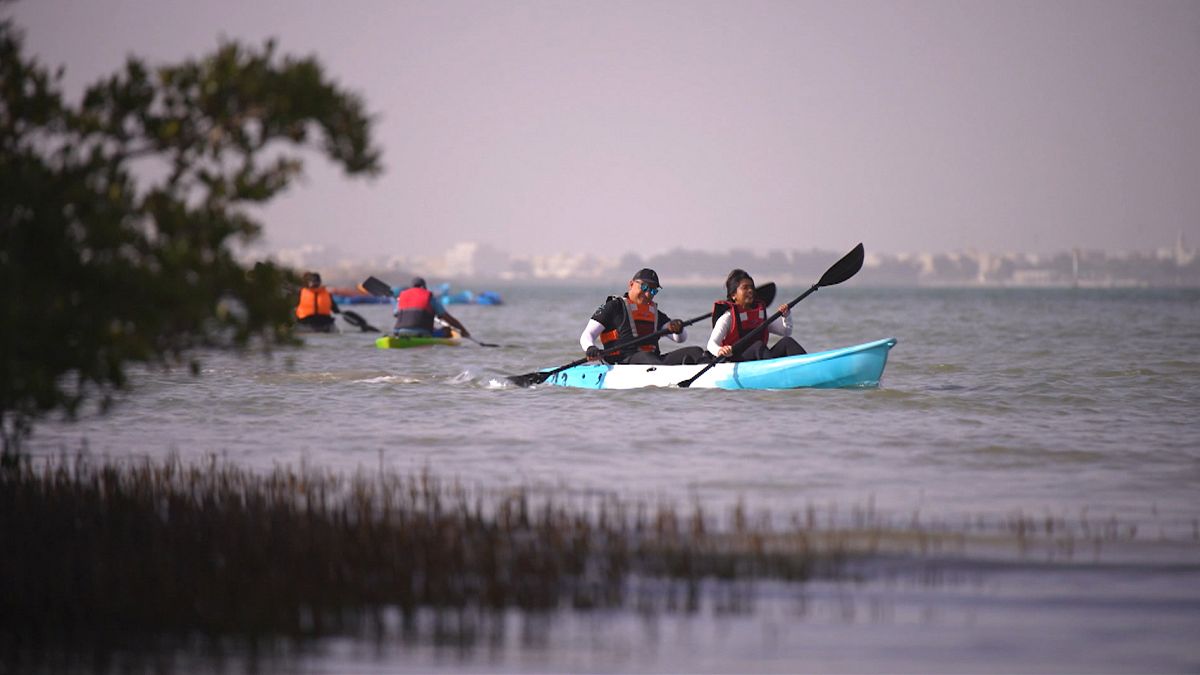Can this 300-year-old landscape survive another 300 years?

Climate Now visits the Sanssouci Palace and Gardens in Potsdam, Germany, a world heritage site under threat from climate change. Droughts, heatwaves, and heavy rain are all taking their toll on this historic three-hundred-year-old landscape. Can it survive for another 300 years?
World heritage sites are increasingly at risk from the effects of climate change. In this episode of Climate Now we see how managers at Prussian King Frederick the Great’s palaces and gardens are working to adapt to rising temperatures, ever-increasing heatwaves and occasional heavy rain.
Globally the hottest August on record
First, let’s take a look at the Copernicus Climate Change Service which confirms that globally we just had the hottest August on record, with temperatures 0.7 degrees Celsius above the 1991-2020 average.
It was also the hottest season from June to August on record. August saw heat waves in Portugal, Italy, France, North Africa, and across the central and southern United States.
The heat waves hit the oceans, too. The lines on the graph above show daily global sea surface temperatures every year since 1979.
Since the early 1980s there has been a marked rise, but the red line for 2023, indicates the sea surface is over half a degree on average warmer than previous years – another new record high.
Moving on to Antarctica, where it’s wintertime, we can see that sea ice concentrations were below average in large areas shaded in red on this map.
There was also a record low for August in terms of sea ice extent – the measure of areas where at least 15% of the ocean is frozen.
Antarctic sea ice extent has been at unprecedented low levels since May this year.
Sanssouci Palace and Gardens in Potsdam, Germany, under threat from climate change
And now, back to our story and the world heritage site of Sanssouci Palace and Gardens in Potsdam, Germany.
Europe has many historic gardens and palaces, landmarks that were built to last – but can they survive in the face of accelerating climate change?
In the 18th century, this estate was Frederick the Great’s summer playground – the Prussian king named it Sanssouci – a place “without a care”. But today, with a million visitors a year, there’s plenty to care for. And with the onslaught of climate change, there’s plenty to be concerned about, too, according to Michael Rohde, Garden Director, at the Foundation Of Prussian Palaces and Gardens.
“We’ve been feeling the effects of climate change here for about ten years, but the last six years have been much more severe. It’s raining less here, we have the impacts of heat, we have the soil, the drying out of the groundwater, it’s not recharging anymore. And of course, we have the issue of trees falling down as a consequence of that.”
The ongoing low groundwater levels leave the trees more susceptible to fungus and insects.
The number of trees dying here annually has risen from a few dozen twenty years ago to several hundred today.
“The gardens are the only category of monument that is alive, they are living monuments. It’s never been more dramatic than it is now, today. We need help – staffing and funding. Then we can do climate adaptation,” he explains.
Katharina Matheja is a conservationist for the Foundation of Prussian Palaces and Gardens and she has recently introduced resource efficient irrigation, something previously considered unthinkable in a historic garden in a relatively wet country like Germany.
“In such an exposed location as here, we just have to irrigate continuously now, and it’s working well,” she says.
The gardeners are also experimenting with planting natural saplings from the parkland, rather than buying trees from nurseries as before. The idea is that young plants that have survived here have a better chance of resisting drought and heat in the future.
“Our hope is that this tree is better adapted to the site than a tree that comes from the nursery where it’s pampered with nutrients and water, that this tree can develop better here,” says Katharina.
Despite the hopes Katharina has for these trees, she explains the unique challenges of managing a World Heritage Site in the face of climate change.
“For us as a World Heritage Site, as a garden monument, it’s very important that we stick to the historic plans from 1740 or even from the mid-19th century. We have to adhere to these specifications. If there was a copper beech here, we try to plant a copper beech at this point, and there is hardly any leeway. We can’t suddenly put other species here. We try to experiment with varieties and provenances in some marginal areas, but we are very limited, and for us, it’s very important to keep the garden monument as it was originally intended,” she explains.
Some of the Sanssouci palaces are now suffering from more extreme weather, particularly high humidity that damages furniture and wall coverings, according to conservationist Kathrin Lange, Head of Conservation at the Foundation of Prussian Palaces and Gardens.
“Very obvious examples are when we have dew point changes when condensation runs down the walls when we have mould growth in the corners when materials move against each other and thus detach from their substrates,” she says.
“These are all climate changes that trigger these reactions. We actually feel the biggest changes with the change in humidity that we get into the rooms. The humidity is actually the major factor in changing the materials.”
Kathrin Lange has a few options to adapt to the heat in summer – she can institute a regime of early morning and late evening ventilation to cool the interior and limit visitor numbers in order to reduce accumulated body heat and condensation.
Nevertheless, she is concerned about trees and branches falling on buildings, fountains, statues and paths, not only because of the risk to visitors, but also because the costs of rebuilding in the same style and with the same materials could be prohibitive.
in the last decade, it has become more difficult for the managers at Sanssouci to conserve this treasured site as it was when Prussian royals enjoyed it.
The landscape can’t be modified – trees, paths, and waterways should remain as the designers intended, and there is hope it can be done, according to Garden Director Michael Rohde.
“If we implement all the adaptation strategies and also maybe use adapted woody plants and trees, then we can preserve the basic structure,” he concludes.
It’s going to be a huge challenge to conserve these cultural heritage sites for the future as the planet warms, and a combination of monitoring and smart adaptation is inevitably going to be needed to conserve them in as best condition as possible for the centuries to come.
Source: Euro News















